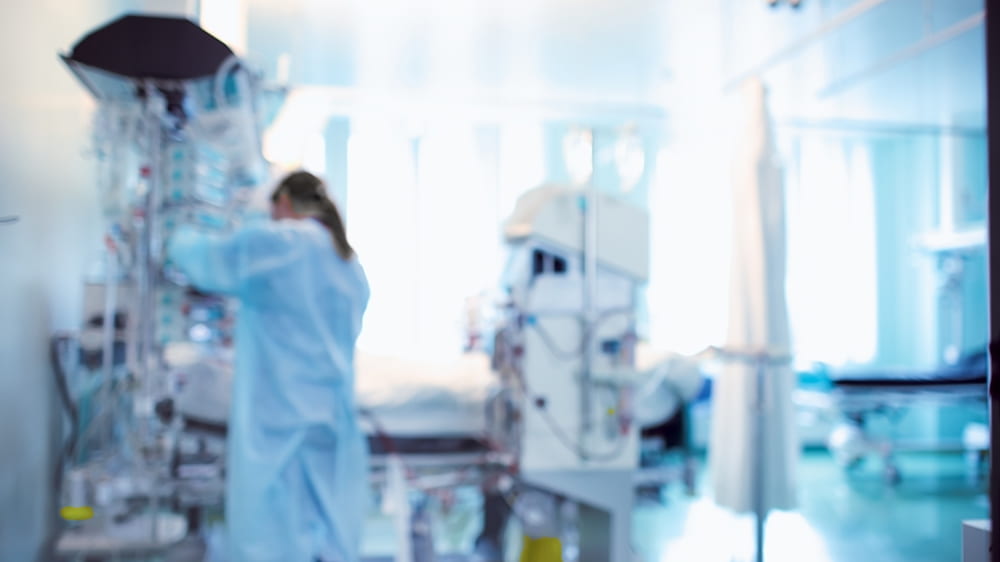by Elise Wachspress
Aside from the obvious, COVID-19 has taught us a lot of things we might never have thought would interest us. Now we all know what Zoom is (even if we don’t know who might be wearing pajama bottoms). We know how Instacart works and that Amazon delivers toilet paper. We get the basics of making face masks and the safest materials to use. Even the Oxford English Dictionary is pointing out words surging in usage after decades of disuse.
For better or worse, we also now know a lot more about intensive care units. Some of us might have been familiar with surgical ICUs, when friends or family needed special post-operative care. But the many media stories about COVID have brought us—intellectually—into medical ICUs, for patients who need long-term, intensive observation and treatment. We’ve heard endless reporting of the many machines, monitors, ventilators, tubes, and wires involved, and stories of the armies of medical professionals treating those who are critically ill.
But the tiniest players in the ICU—short of the virus itself—can be overlooked. The microbes that live within us are major factors in keeping us healthy, and nowhere is understanding their involvement more important than in the ICU.
Critically ill patients are often those most at risk for alterations in their microbiome. Unlike surgical patients, who come into the hospital with digestive systems largely intact, patients admitted to the medical ICU have likely been under stress for a while, with perhaps major changes in diet and treatment with multiple medications which expand in the ICU.
Among these treatments, antibiotics are the most disruptive to the microbial community, killing off good bacteria along with the problematic ones and further unbalancing the microbial diversity that supports good immune function and health. Once that harmony is upset, those bacteria that are left may pump out metabolites—end products—that seriously compromise the chemistry of the entire gut and exacerbate the patient’s illness.
Then the really bad microbes, those resistant to antibiotics, can take over. Resistant bacteria can invade the blood stream via compromised gut tissue and spread to the bloodstream and throughout the body, potentially leading to sepsis.
When a patient has an infection serious enough to land in the ICU, antibiotics may be absolutely necessary. But by understanding the mechanics of these microbial interactions, intensivists can provide better, more nuanced care.
John P. Kress, MD, is an intensive care specialist widely recognized as an innovator in his field. He was among the first in the US to demonstrate that helmet-based respiratory assistance was often more effective—and less distressing—than intrusive ventilators for some ICU patients. So it is no surprise that he is actively investigating how treatments in the ICU affect and are affected by the patient’s microbiome—and how managing this balance can improve outcomes.
With his postdoctoral fellow, Matthew Stutz, MD, Kress’s team are providing stool and blood samples collected during the ICU stay to Duchossois Family Institute Director Eric Pamer, MD. The DFI team is studying the bacterial composition of each, looking for correlations over time.
How does the microbial balance correlate with the development of sepsis? Can certain bacteria found in the stool or blood predict the length of ICU stay or the need for a ventilator? Do changes in the microbiome track readmission to the ICU or mortality? Do the microbes present affect the patient’s function and strength after discharge, including long-term cognition and mental health?
As with most studies, this one will involve a lot of data-crunching. To the huge amount of information collected on each ICU patient–vital signs; clinical notes; lab, microbiology, pathology, pharmacy, and respiratory support reports—the DFI team will add vast stores of genomic data on the bacteria they find. The team will also integrate evaluations of long-term outcomes like functional status, cognition, and mental health for a year after discharge from the ICU.
Enrolling patients in this study will be somewhat complicated: close to 40 percent of patients admitted to the ICU may not be conscious enough to provide truly informed consent. Fellows like Dr. Stutz will need to carefully explain the study to distraught family members who hold the patient’s power of attorney, with the assurance that patients can always opt out of the study at a later date.
But Kress and his team agree that the ongoing coronavirus pandemic offers an exceptional opportunity. The team can both identify changes over time in the microbiota of patients in the ICU with any illness and compare these to patients isolated in intensive care for COVID-19. This study may lend greater clarity in treating—and saving—patients seriously ill from this novel virus.
Because of the large number of patients treated in UChicago Medicine’s medical ICU, the team has been enrolling about 50 patients a month. Their goal of studying 500 patients over the next year would make this the largest study ever of the effect of the microbiome in the intensive care unit. By generating insights into patients’ “inner allies,” they can better restore health to these most vulnerable patients.
Elise Wachspress is a senior communications strategist for the University of Chicago Medicine & Biological Sciences Development office




